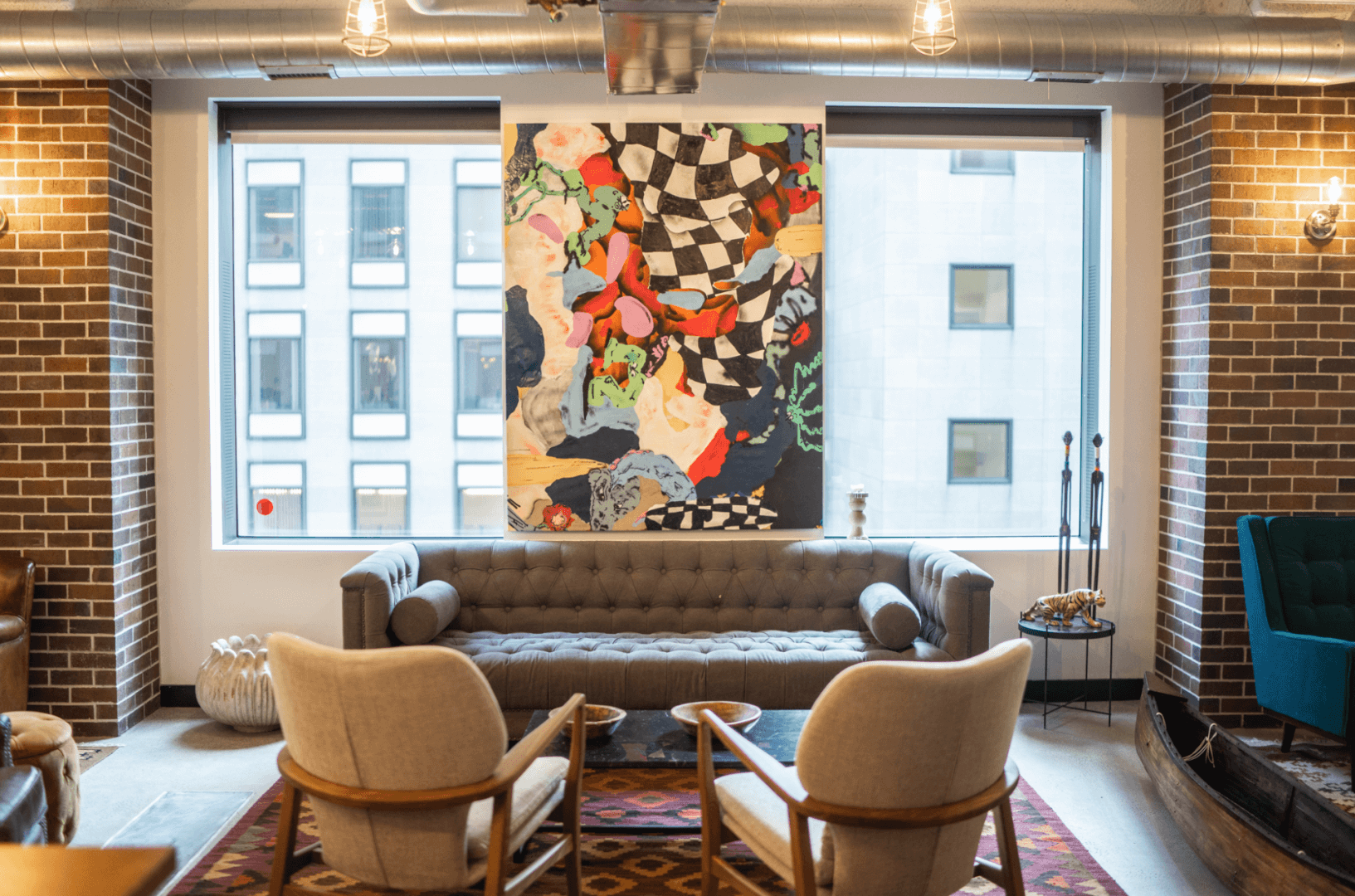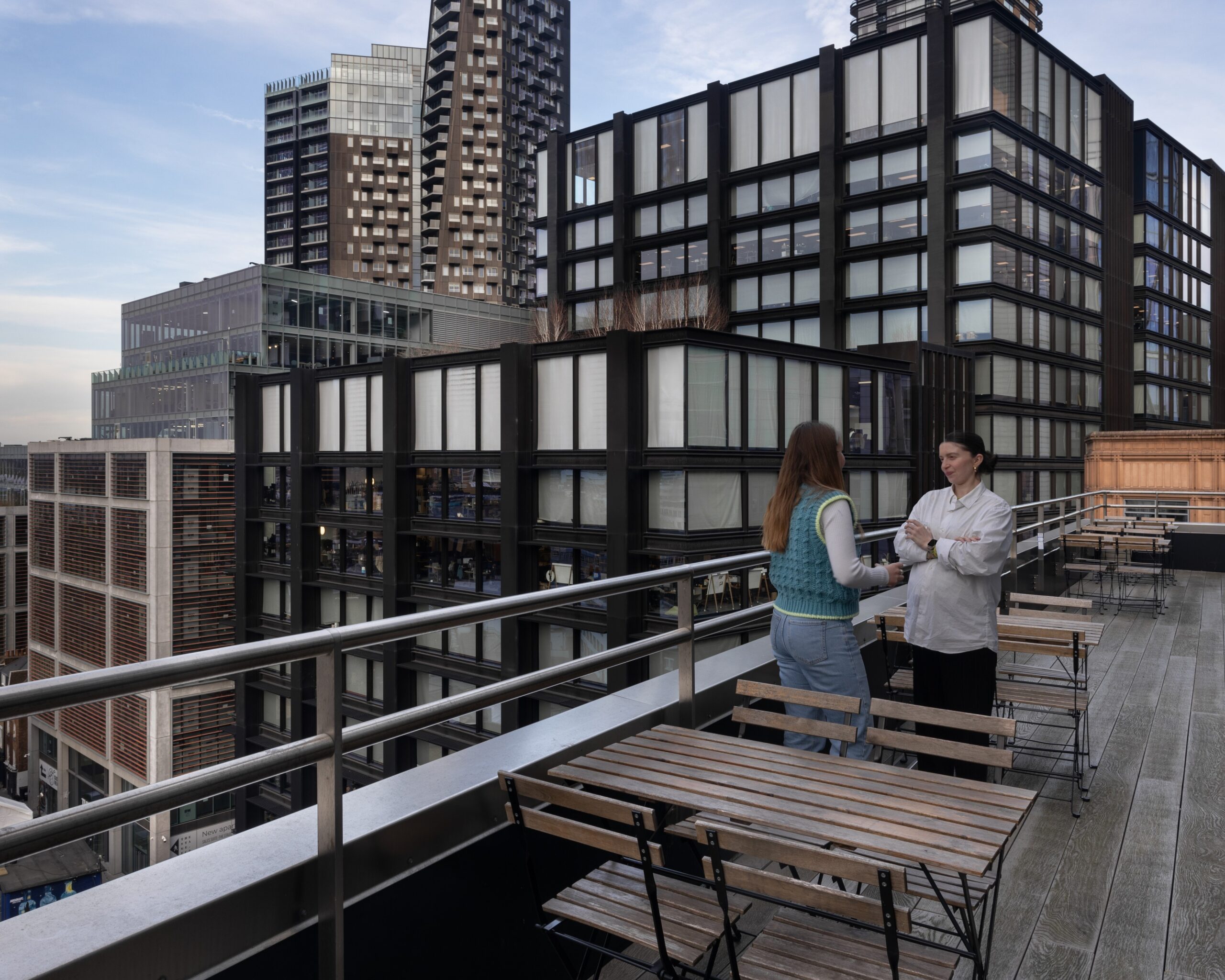
How to Rent Office Space in London: A Complete Guide
Looking for an office space in London can be a real headache. Trust me, the options can feel overwhelming at first. But don’t worry – London’s property market, while vast and varied, can be tackled if you know what you’re looking for.
This guide covers everything from traditional long-term leases to those trendy coworking spots you’ve probably walked past. I’ll share what I’ve learned about pricing trends, neighborhood vibes, and the nitty-gritty of rental agreements. Whether you’re new to London or just moving across town, you’ll find practical advice on Shoreditch, Hammersmith, Old Street, and beyond.
Understanding London’s Office Space Market
London’s office scene has gone through quite a transformation since 2020. Some companies rushed back to full-time office setups, while others realized their staff work just fine from home part of the week. This shift has created an interesting mix of options for businesses of all sizes.
Traditional Office Leases
Traditional leases are the old-school approach – you’re typically locked in for at least 3-5 years. You’ll handle everything from decorating the space to keeping the lights on. The upfront costs can make your accountant sweat, but you get complete control over your environment.
I’ve seen many established companies prefer this route because they can truly make the space their own. You can knock down walls, paint everything your brand color, and really settle in. For businesses that know exactly how many people they’ll employ in the next few years, these leases often work out cheaper in the long run compared to those premium flexible spaces everyone’s talking about.
Serviced Offices and Managed Workspaces
Serviced offices are my go-to recommendation for businesses that want simplicity without the commitment of a traditional lease. Think of them as the middle ground – you get a furnished office with internet, reception staff, and meeting rooms all wrapped up in one monthly payment.
What’s great about these spaces is how simple they make your life. No more juggling multiple bills or panicking when the Wi-Fi goes down. Contracts usually run from 3 months to 2 years, striking a nice balance between stability and flexibility. You still get your own private space with your logo on the door, but without the headaches of property management.
Coworking and Flexible Office Solutions
The fastest-growing option in London right now is flexible workspace. You can get anything from a hot desk to a private office, all within vibrant community-focused buildings. What’s interesting is how these spaces have evolved beyond just startup territory.
Last month, I helped a team from a Fortune 500 company find a flexible space for their special project team. They loved the buzzing atmosphere and the ability to scale up or down monthly. The economics make sense too – while the monthly rate might look higher at first glance, there are no surprise costs lurking in the background. Everything from fancy coffee to printing is included, making budget forecasting much more accurate.
London neighborhoods each have their own price tags. If you’re after prestige, Mayfair and St. James’s will cost you £70-120+ per square foot. More creative types flock to Shoreditch at a more reasonable £45-65 per square foot. If you’re budget-conscious but still want good connections, areas like Hammersmith outside Zone 1 offer solid value at £35-55 per square foot without sacrificing those all-important transport links.
Key Factors to Consider When Renting Office Space
Budget and Cost Considerations
The rental figure you see advertised? That’s just the beginning. With traditional leases, you need to add business rates (a tax), service charges, utilities, security, cleaning, and maintenance. These extras typically add 30-50% to your base rent, which can come as a nasty shock if you haven’t planned for it.
Flexible workspaces might seem pricier at first, but they roll everything into one predictable payment. No surprise bills, no capital expenditure on furniture, and no need to hire maintenance staff. Just remember that traditional leases hit you with significant upfront costs too – deposits, legal fees, and fitting out the space can require substantial capital before you even move in.
Location and Accessibility
Transport links can make or break your office choice. Good connections don’t just impress clients; they make a massive difference to your team’s daily life. I’ve seen companies lose talented staff simply because the commute became too painful.
Look beyond the nearest tube station. How many different routes can people use to reach you? What are journey times like from major transport hubs? This is especially important if you have clients visiting regularly or staff living across different parts of London.
The neighborhood vibe matters too. Are there decent places to grab lunch? Any green spaces for a midday mental reset? Gyms nearby for the fitness enthusiasts on your team? The right location does wonders for keeping your team happy and attracting new talent.
Some industries still place huge value on prestigious addresses, while others find creative neighborhoods better reflect their brand.
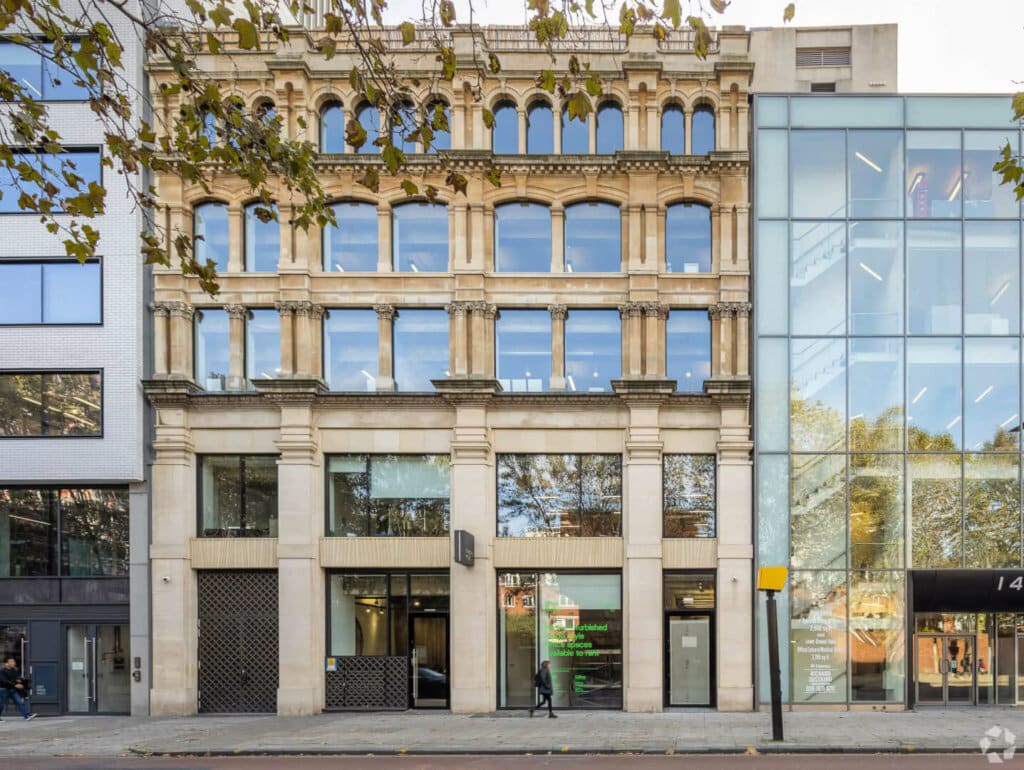
London Workspace Requirements to Look For
Space planning isn’t what it used to be. The old rule of thumb was 8-10 square meters per person, but hybrid working has changed the calculation. Now you need to think about your specific patterns: Will your entire team ever be in on the same day? Do you need more meeting rooms and fewer desks?
Make a list of what you need versus what would be nice to have. Essential items might include meeting rooms, proper kitchen facilities, reliable internet, and enough storage. Wish-list items could include wellness spaces, phone booths for private calls, outdoor areas, or event spaces. Focus on what will genuinely improve how your team works.
I always encourage thinking about growth, too. If you’re taking a traditional lease, you might need to secure more space than you currently need. Some landlords will offer first rights to adjacent space if it becomes available, which can be worth negotiating if you’re expecting significant expansion.
Contract Terms and Flexibility
The length of your commitment involves a classic trade-off. Shorter terms give you freedom but come at a premium price, while longer commitments often secure better rates but can leave you stuck if your business circumstances change.
Break clauses are your safety net in longer agreements. They allow you to exit at specific points without penalties if needed. They’re worth pushing for during negotiations, even if it means compromising on other terms. Think of them as insurance against an uncertain future.
For growing businesses, understanding scaling options is crucial. How easy is it to get more space when you need it? What are the costs and processes involved? Flexible workspace providers excel here, often letting you adjust your requirements on a month-by-month basis as your team expands or contracts.
Step-by-Step Guide to Renting Office Space in London
Step 1: Determining Your Requirements
Start by getting crystal clear on what you need. How many people will use the space regularly? What are your working patterns like? Do you need special facilities for your industry? Document your current requirements and try to project what you’ll need 12-24 months ahead.
Budget realistically by creating a comprehensive list of all possible costs. For traditional leases, include rent, business rates, service charges, fit-out costs, and ongoing operational expenses. For flexible options, compare the all-inclusive rates against what a traditional lease would cost when all extras are factored in.
I find it helpful to create two distinct lists: non-negotiable requirements and nice-to-haves. This prevents making decisions based on attractive but unnecessary features or purely subjective impressions of a space. Stay focused on what will truly support your business operations.
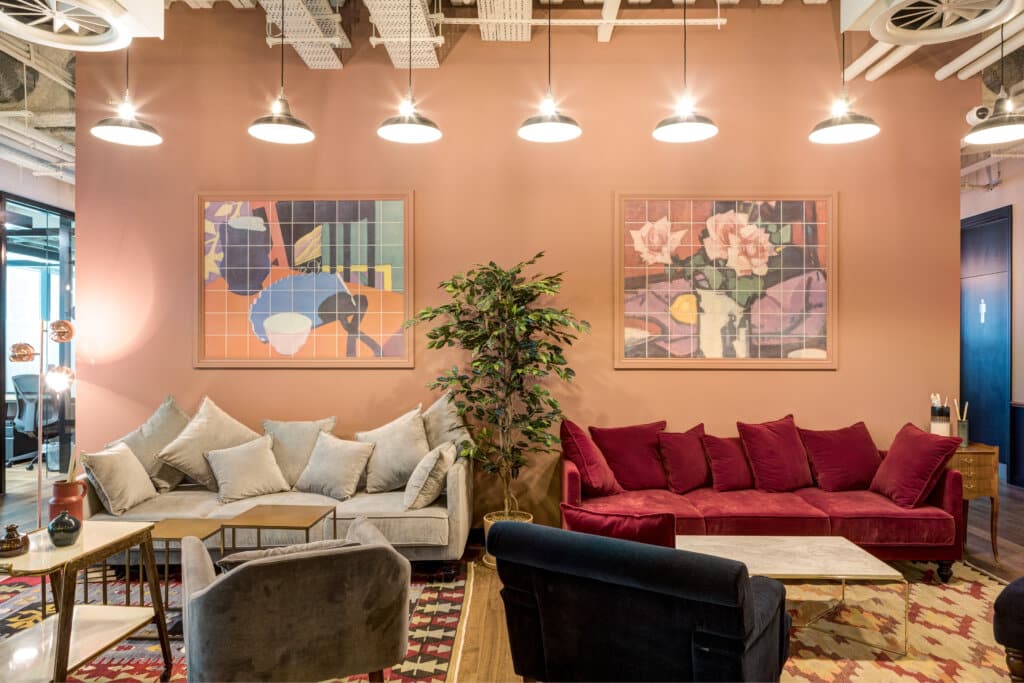
Step 2: Researching and Viewing Properties
Commercial property agents are valuable allies in your search. They specialize in specific areas and property types and can provide market knowledge you won’t find online. While they represent landlords’ interests, they also give access to opportunities that might not be publicly listed.
For flexible workspace, you can often approach providers directly, though independent workspace consultants can offer impartial guidance across multiple operators.
When viewing spaces, look past the surface impressions. Check structural elements like natural light (a game-changer for team wellbeing), sound insulation between rooms, air quality, and temperature control. Test mobile reception throughout the space, note accessibility features, and assess security provisions. I always recommend visiting at different times of day to check noise levels and get a feel for the neighborhood at various times.
Be prepared with questions about contract flexibility, what amenities are truly included, what costs extra, who handles maintenance, and specifications for internet and other infrastructure. For flexible spaces, ask about the community aspects, how meeting rooms are booked, and peak usage patterns for shared facilities.
Step 3: Negotiating Terms and Signing Contracts
Different property types call for different negotiation strategies. With traditional leases, focus on rent-free periods (you might secure 3-6 months, especially for longer commitments), break clauses after specific periods, and caps on service charge increases. For flexible spaces, you can often negotiate on commitment length, expansion rights, and included services package.
Make sure you understand your legal obligations, particularly regarding repairs, insurance, and end-of-term conditions. Traditional leases deserve special attention to dilapidation clauses, which specify how you must return the space when you leave – this can involve significant costs if not properly understood upfront.
Due diligence steps include reviewing title documents, checking planning permissions, and verifying building compliance certificates. For flexible options, research the provider’s financial stability (you don’t want them going bust mid-contract), speak with current clients about service levels, and thoroughly review house rules and access policies.
Prime London Office Locations Spotlight
London’s neighborhoods each offer distinct advantages for different business types. Here’s a closer look at three areas that consistently prove popular:
Shoreditch: London’s Creative Hub
Shoreditch has such a distinct personality – historic buildings alongside street art, creating this unique energy that creative businesses love. The area has become the go-to spot for design agencies, media companies, and tech startups who are drawn to its distinctive atmosphere.
What makes Shoreditch special is the creative ecosystem that’s developed there. Your neighbors might be award-winning design studios or innovative tech firms, creating natural networking opportunities. The area buzzes with inspiration, from the workspaces themselves to the abundance of interesting restaurants, bars, and cultural venues.
Mindspace Shoreditch perfectly captures this energy, offering beautifully designed workspace right in the heart of this creative district. The interiors reflect the neighborhood’s artistic spirit while providing the professional environment businesses need to thrive. Ready to experience Shoreditch’s creative magic? Book a tour at Mindspace Shoreditch today.
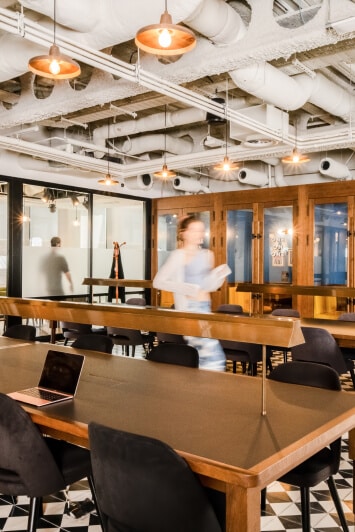
Hammersmith: West London’s Business District
Hammersmith has quietly become one of London’s most practical business locations. It combines excellent transport links with significantly better value than central locations. You’ll find everyone from global corporations to growing local businesses making their home here.
The transport connections are unbeatable, with four tube lines, numerous bus routes, and quick access to Heathrow. The riverside location adds a pleasant dimension for lunchtime walks, while the established business focus means you’ll find all the practical amenities professionals need.
Mindspace Hammersmith exemplifies what makes this area special – a thoughtfully designed workspace that balances connectivity with value, giving businesses a prestigious West London base without the eye-watering costs of more central locations. Want the perfect blend of accessibility and value? Book a tour today at Mindspace Hammersmith.

Old Street: London’s Tech Epicenter
Old Street (or “Silicon Roundabout” as locals nicknamed it) has established itself as the beating heart of London’s tech scene. The area supports businesses from early-stage startups to established scale-ups with a rich ecosystem of networking events, accelerator programs, and investment opportunities.
The concentration of tech companies creates a unique environment where collaboration happens naturally and talent attraction becomes easier. The proximity to the City offers particular advantages for fintech companies that need regular contact with financial institutions.
Mindspace Old Street sits right at this crucial intersection, providing workspace specifically designed with tech-focused businesses in mind. The space reflects the innovative spirit of the neighborhood while offering the practical infrastructure these companies need. Want to join London’s thriving tech community? Secure your space at Mindspace Old Street and book a tour today.
Conclusion
Finding your ideal London office comes down to balancing various factors – what you can afford, where you need to be, what workspace features matter most, and how much contractual flexibility you require. The good news? London’s diverse property market truly does offer something for everyone.
Take your time assessing what your business genuinely needs. Visit multiple options before deciding, and think carefully about how each location aligns with your company culture and long-term goals. With careful consideration, you’ll find space that not just houses your business but actively helps it flourish in London’s dynamic business landscape.
Ready to find your perfect London workspace? Book your workspace with Mindspace today.



